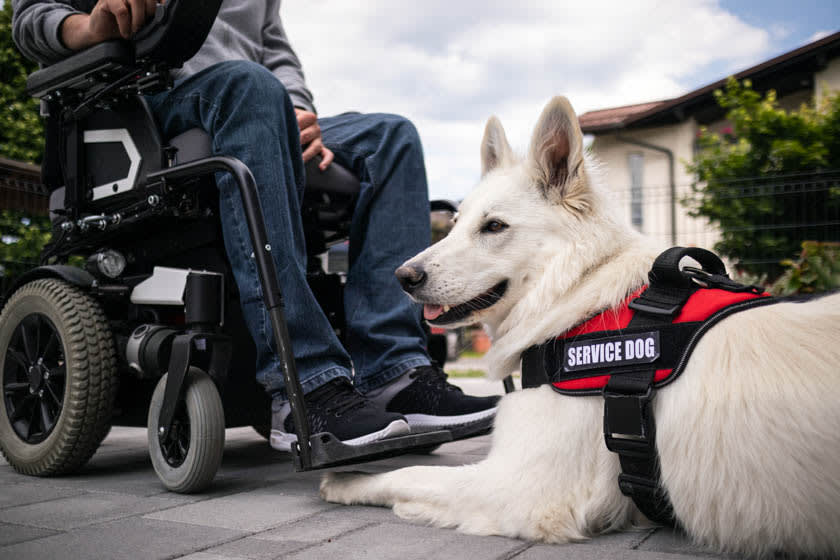Pet-friendly Communities: The Dos and Don’ts
As valued members of the family, pets are some of the most active residents of a community. While there are many benefits to living in a homeowners’ association (HOA), pet owners must be aware of the pet laws they're expected to follow.
Generally, communities have pet rules, regulations, and restrictions that guide pet ownership within the HOA. A community’s pet policy often details the type of pets allowed in the association, rules for pet owners, and steps taken to ensure compliance. While restrictions in each community are different, the following are a few general dos and don’ts for successful ownership in pet-friendly communities.
DO: Review the Governing Documents
Your pet is a big part of your life. That’s why you should make sure to review all paperwork that may detail what your pet can and can’t do in and around its home. Before you sign on the dotted line, study the HOA’s Covenants, Conditions, and Restrictions (CC&Rs).
Familiarize yourself with the dog rules, cat rules, and any other regulations that may apply to pet owners. Determine if you’re able to adhere to these HOA rules and if they’re compatible with your lifestyle. If the legal wording is confusing, ask an attorney to review the documents with you.
DON’T: Assume All Pet-Friendly Communities are the Same
A private entity, each HOA can decide if it allows members to own and house pets. Further, they may have general dog restrictions, breed restrictions, and pet-size restrictions. With efforts to keep harmony within the association, allow certain liberties, and keep the grounds well-maintained and presentable, you’ll find that many associations have rules, such as:
- Height, weight, and size of the pet
- Number of pets per household
- Species of pets allowed
- Breed of dogs or cats allowed
DO: Be a Good Neighbor
Once you have a proper understanding of your HOA’s pet policy, do your best to follow the rules. This will help create a good relationship between you and your neighbors. Talk to your neighbors face-to-face and keep conversations friendly. With pet noise complaints being one of the top issues in community associations, keeping open lines of communication between you and your neighbors is an easy and quick way to resolve such issues.
DON’T: Ignore the Barking
Dogs don’t bark just to bark. Barking is a form of communication, so it’s crucial to determine what your dog is trying to say. The most common causes of barking include protection and warning, fear, play, attention, loneliness, and separation anxiety. Consider efforts such as exercise, socialization, or training to help your dog work through the issue.
DO: Be Courteous to the Community
If you’re paying monthly dues to help maintain neighborhood parks, pools, or walking trails, then get out and enjoy them with your pet while helping keep the grounds safe and clean. As a common courtesy, you should always pick up after your pet. Getting out and enjoying the extra things your community offers will likely improve your sense of community and make your experience of living there far more enjoyable.
DON’T: Let Simple Tasks Turn into Big, Stinky Problems
While picking up after your pet may be a habit, remembering to pack waste bags before a walk may not be. Many communities now have pet waste stations complete with waste bags and receptacles. Make it a point to find out if your community has these stations and plan your walks near them.
If your HOA allows pets and doesn’t have pet stations in place, it’s something that you can ask your board to explore. With enough interest, you might be able to spearhead that change.

DO: Make Your Assistance Animal a Priority
Assistance animals, like service animals, comfort animals, and emotional support animals, are required to have reasonable accommodations under the Fair Housing Act. Because assistance animals aren’t viewed as pets, community rules regarding pets—like size and weight limits—don’t apply. However, it's always best to check in with your board to discuss service animal rules.
DON’T: Leave Questions Unanswered
If a homeowner with an assistance animal requests accommodation, boards need to be careful about how they respond. Attorneys suggest boards implement a very limited vetting process and consult counsel before questioning owners, denying requests, or even adopting restrictions.
DO: Understand Rule Violations
Your association will have a set of governing documents, which includes pet-specific rules and regulations made by the community. When a member of the association breaks one of the rules, then they may receive a violation notice from the HOA board. Typically, a violation from your HOA will include details about the offense, how to correct it, and any other information about potential fees, fines, and a deadline to respond or fix the issue.
DON’T: Worry too Much About Simple Mistakes
Most boards understand that mistakes happen, and violations are often resolved with a friendly verbal or written reminder. If you question the effectiveness of certain pet rules in an HOA, this might be a good time to discuss it with your board in a calm and relaxed manner. It’s possible to amend the rules, and your board has a duty to work with you to come to an appropriate solution. Read our ebook, “Is It a Good HOA Rule?” to learn what rules help support—not hinder—a homeowner’s efforts to live within the association’s expectations.